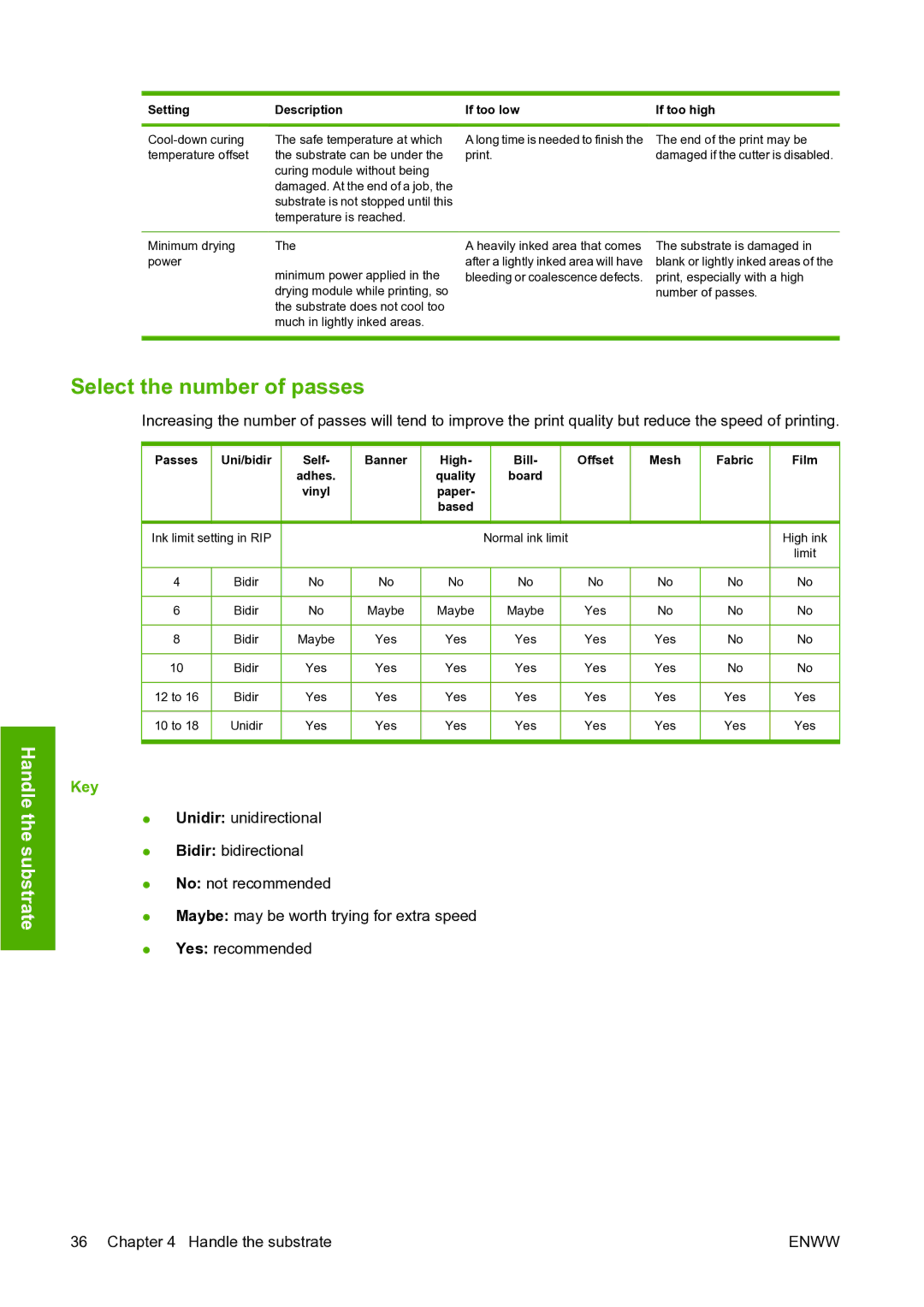
Handle the substrate
Setting | Description | If too low | If too high |
|
|
|
|
The safe temperature at which | A long time is needed to finish the | The end of the print may be | |
temperature offset | the substrate can be under the | print. | damaged if the cutter is disabled. |
| curing module without being |
|
|
| damaged. At the end of a job, the |
|
|
| substrate is not stopped until this |
|
|
| temperature is reached. |
|
|
|
|
|
|
Minimum drying | The | A heavily inked area that comes | The substrate is damaged in |
power | minimum power applied in the | after a lightly inked area will have | blank or lightly inked areas of the |
| bleeding or coalescence defects. | print, especially with a high | |
| drying module while printing, so |
| number of passes. |
| the substrate does not cool too |
|
|
| much in lightly inked areas. |
|
|
|
|
|
|
Select the number of passes
Increasing the number of passes will tend to improve the print quality but reduce the speed of printing.
Passes | Uni/bidir | Self- | Banner | High- |
| Bill- |
| Offset | Mesh | Fabric | Film |
|
| adhes. |
| quality |
| board |
|
|
|
|
|
|
| vinyl |
| paper- |
|
|
|
|
|
|
|
|
|
|
| based |
|
|
|
|
|
|
|
|
|
|
|
|
|
|
|
|
|
|
|
Ink limit setting in RIP |
|
|
| Normal ink limit |
|
|
| High ink | |||
|
|
|
|
|
|
|
|
|
|
| limit |
|
|
|
|
|
|
|
|
|
|
| |
4 | Bidir | No | No | No |
| No |
| No | No | No | No |
|
|
|
|
|
|
|
|
|
|
|
|
6 | Bidir | No | Maybe | Maybe |
| Maybe |
| Yes | No | No | No |
|
|
|
|
|
|
|
|
|
|
|
|
8 | Bidir | Maybe | Yes | Yes |
| Yes |
| Yes | Yes | No | No |
|
|
|
|
|
|
|
|
|
|
|
|
10 | Bidir | Yes | Yes | Yes |
| Yes |
| Yes | Yes | No | No |
|
|
|
|
|
|
|
|
|
|
|
|
12 to 16 | Bidir | Yes | Yes | Yes |
| Yes |
| Yes | Yes | Yes | Yes |
|
|
|
|
|
|
|
|
|
|
|
|
10 to 18 | Unidir | Yes | Yes | Yes |
| Yes |
| Yes | Yes | Yes | Yes |
|
|
|
|
|
|
|
|
|
|
|
|
Key
●Unidir: unidirectional
●Bidir: bidirectional
●No: not recommended
●Maybe: may be worth trying for extra speed
●Yes: recommended
36 Chapter 4 Handle the substrate | ENWW |
